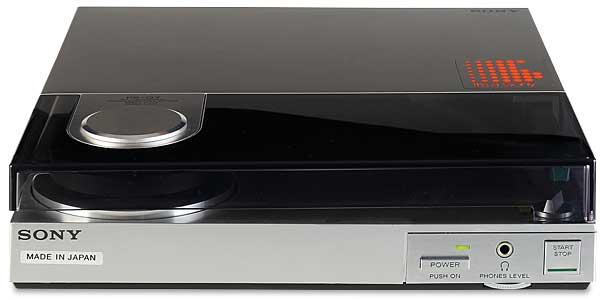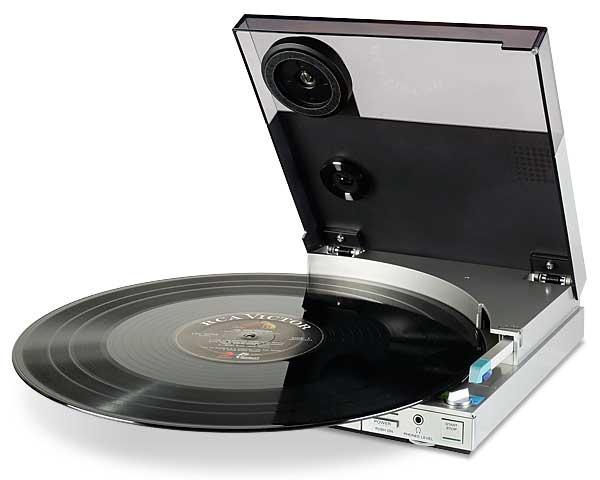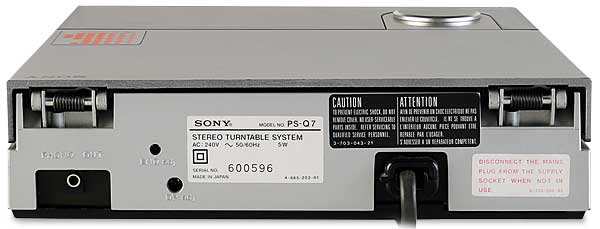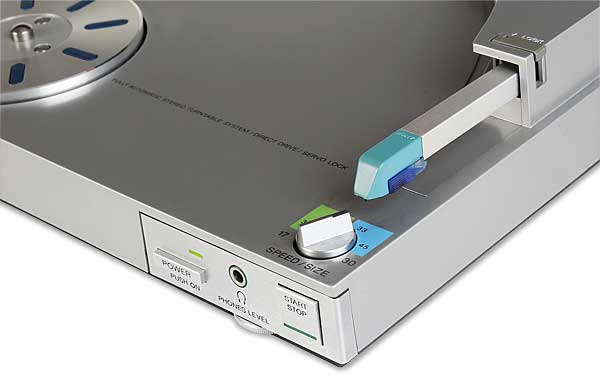Sony PS-Q7 Turntable

 More miniature magic from a brand proud to beat its own path came in 1982 in the form of probably the smallest hi-fi turntable ever made. How does it sound today?
More miniature magic from a brand proud to beat its own path came in 1982 in the form of probably the smallest hi-fi turntable ever made. How does it sound today?
When Technics released its SL-10 turntable in1979 [HFN Apr '19], it was evident that a record player did not have to be large, overly expensive or complicated in use to give top quality results. So compelling was this concept that soon all of the big players in the Japanese hi-fi industry were racing to produce something similar. Well, almost all. Sony, the great master of miniaturisation, was not a company to imitate others.
The SL-10 boasted a footprint the size of an LP sleeve but Sony's miniature, the PS-Q7, was closer in size to the cover containing a 7in single. Designed to match the FH-7 micro system, the new model measured just 215x 58x235mm (whd). This saw the platter reduced to just a small hub in one corner of the plinth with the record overhanging the rest of the cabinet on two sides.

A New Angle
Unlike the majority of square, compact turntables that came from Japan in the early '80s the PS-Q7 did not have a linear tracking arm. The small size of the plinth did not allow a conventional radial type to be used either, for there was no available point to mount the pivot that would yield an acceptable tracking angle over the complete surface of a record. The problem was solved by using an 'L-shaped' arm, with the pivot located at the rear of the deck near the centre. The right-angle bend in the arm resulted in the tip of the stylus tracing a line which was roughly along the inside edge of the lid, meeting the requirement for compactness without having to make the arm excessively short.
The loading this unusual arrangement put on the arm bearings meant they had to be of unusually high quality, as did the construction of the rest of the arm. The short part of the 'L', concealed by a curved plastic moulding, was pressure die-cast with the bearing housing an integral part. The long part was visible and was formed from a length of square alloy tube. This was tipped with a specially designed moving-magnet cartridge that employed a 4-pin mounting, similar to Technics' T4P system but smaller and thus incompatible.
Major Feat
Meanwhile, the arm was balanced by the combination of a fixed counterweight and an adjustable spring whose position was pre-set at manufacture to yield 2g of downforce. Since only one cartridge type was available there was never any need for the user to adjust this.

The automatic movement of the arm was operated by a dedicated motor rather than the usual method of using gears driven from the spindle of the platter. While this approach saved space, it added complexity. The motor required a complicated arrangement of digital electronics to coordinate its sequences, though this was simplified in later models when a special IC was produced to control these functions.
The inclusion of direct drive in a turntable so small was a major engineering feat. The DD motor followed Sony's established BSL (Brushless and SlotLess) principle and retained the printed 'Magnedisc' encoder to monitor its rotation. Because of their low speed, all turntable DD motors rely to some extent on the mass of the platter to act as a flywheel to smooth their rotation and to damp the action of the servo system.
Illegal Activities
This was not possible with the PS-Q7, so instead, the mass of the record became a factor in the motor's control loop. The problem was that the inertial moment of a 7in single is much less than that of a 12in LP, so in the end the motor's torque had to be moderated to ensure stability.

The tiny dimensions of the PS-Q7 precluded the inclusion of a quartz crystal reference. A simpler version of the design, known as the PS-Q3, was also offered. This used belt drive from a small Walkman-type DC brush motor with two stages of reduction and an intermediate high-speed flywheel being required to achieve the correct speed.
The other key difference between the PS-Q3 and the PS-Q7 was that the latter model included a headphone socket with its own volume control. This meant a complete RIAA equalising amplifier was also needed and this was built to tiny dimensions and fitted in the area underneath where the arm rests. This odd addition was necessary as part of a version sold in Japan as the 'Heli Player'.
The Heli Player included a built-in FM stereo transmitter so the turntable could be used with any FM radio or radio/cassette player with no further connections being necessary. Clever though this was, such things were illegal in the UK during the early 1980s so the transmitter section of the PCB was left unpopulated when it came to export models. However, the headphone socket could be used to feed the line-level input fitted to many radios and cassette machines, this being in addition to the direct output from the cartridge, available via a 3.5mm socket at the rear of the deck.
Platter Matters
Since it is fully automatic and only has two major controls the PS-Q7 is very easy to operate. A single dial selects the speed (either 33rpm or 45rpm) and the record size (7in or 12in) with all four permutations available. After that, a single key starts and stops playback, the automatic systems being accurate if a bit slow in operation.

A record can be played with the lid open or shut, a heavy built-in centre clamp running on a ball-race coming into action when the lid is closed. As the 'platter' does not sit that high above the surrounding cabinetwork, warped records will scrape and exhibit poor speed stability. The problem is only made worse if the lid is closed, since now the record has to pass through a very narrow slot. To overcome this issue, Sony provided a flock-covered cardboard disc that could be used beneath the record as a shim.
Though the arm has no cueing lever it can be pushed manually to any position above the LP before the lid is closed and the start key is pushed. The arm then drops into position and playback begins. I might add that because the L-shaped arm has an offset pivot point it tends to lower in an arc, moving slightly inwards from the desired position as it falls. One soon learns to compensate for this but the same happens in reverse, so the stylus can make some odd noises as it is dragged out of the vinyl groove on the upstroke. Luckily a muting relay prevents any 'pops' from reaching the loudspeakers after which the arm is automatically returned to its rest.























































